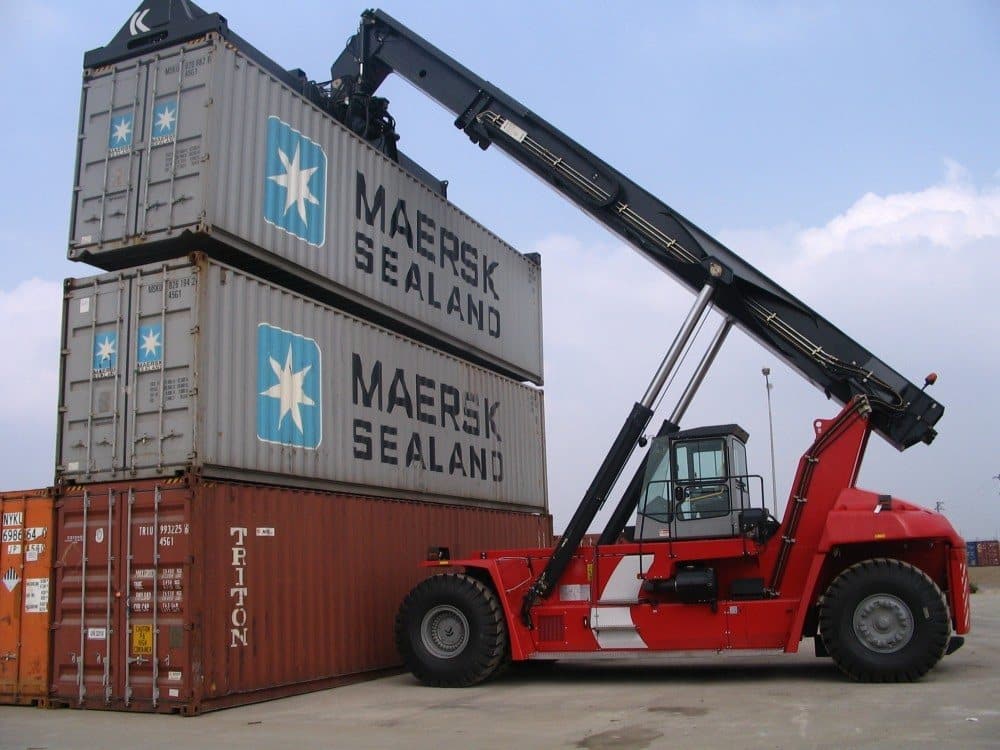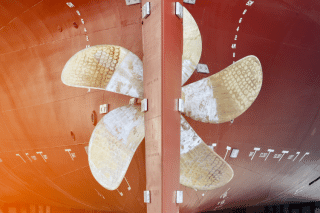In the next few years, artificial intelligence (AI) and machine learning will transform the maritime industry as major players gear up to exploit an increasingly intelligent maritime ecosystem.
Global maritime freight transportation revenue is estimated to reach US $205 billion by 2023, up from US $166 billion in 2017. In order to do this, the industry—logistics, ports, shipping etc.—will need to add AI to its armory of digital technologies.
Examples already abound, including Wärtsilä‘s recent acquisition of Transas to support its ‘Smart Marine Ecosystem’ vision; Maersk Line’s project to test AI situational awareness aboard a containership; French shipping giant CMA CGM’s partnering with San Francisco start-up Shone to explore AI aboard its ships; Stena Line’s deal with a subsidiary of Tokyo-based Hitachi to use AI to cut fuel consumption; or Orient Overseas Container Line (OOCL) teaming up with Microsoft’s research arm in Asia to use AI to improve shipping network operations.
Speaking to NauticExpo e-magazine, OOCL spokesman Stephen Ng commented:
AI is the key to our digital transformation vision. We process and analyze over 30 million vessel updates every month and by leveraging AI and machine learning, we can develop predictive analytics to help us gain a clearer picture of vessel operations.

OOCL teamed up with Microsoft’s research arm in Asia to use AI to improve shipping network operations. (Credit: Microsoft)
He explained:
For example, vessel speed and weather data allows us to optimize and make more accurate decisions on container routing and rerouting plans. Such coordination can smooth out cargo transit across multiple points and create value for customers.
In terms of challenges, Ng noted that for AI and digital transformation to succeed in any organization, one of the important challenges is to truly understand and integrate your organization’s business, user experience, and technology with the company’s vision and strategy. He concluded:
We’re at an early stage but OOCL sees that AI can indeed offer many new opportunities for the shipping industry.

French giant CMA CGM partnered with San Francisco start-up Shone to explore AI aboard its ships. (Credit: CMA CMM)
Cargotec’s global port equipment subsidiary Kalmar sees major AI benefits, as terminal automation director Jari Hämäläinen described to NauticExpo e-magazine:
Optimization of container terminal operations and planning can hugely benefit. Examples include minimizing and automating exceptional case handling, predictive maintenance, and supply chain optimization—terminals, ships, road transportation and warehousing.
Kalmar is already implementing AI. “We have deployed a fuel consumption model for our Eco Reachstacker that’s fully founded on machine learning and also the foundation for our ‘Fuel Saving Guarantee’ where Kalmar can calculate—and will guarantee—fuel consumption for an Eco Reachstacker based on only three inputs from the customer regarding cargo handling patterns.”
While Hämäläinen sees challenges in growing machine learning competences and risk prevention—“ensuring conclusions do not lead to accidents”—he sees interoperability of terminal and ship systems as vital. He added:
I am pretty confident that in the future, both traditional technologies and AI/machine learning will be applied case-by-case.
Classification and Verification
It’s classification societies’ task to ensure AI’s safe, effective absorption into the industry. Lloyd’s Register’s (LR) innovation strategy and research director Luis Benito told NauticExpo e-magazine that he sees major benefits in terms of people’s safety; decreasing incidents and accidents related to shipping; machinery, component and structure maintenance; fuel consumption and efficiency, among others.
But of course LR will face challenges. He explained:
Digital twins [technology] accurately representing reality is a first. Without practical, effective assurance techniques supported by a marine-oriented compliance framework, the evaluation of diagnostics, prognostics and accompanying digital health management technologies will always be subjective.

Optimization of container terminal operations and planning can hugely benefit from AI. (Credit: iStock)
Autonomy at high levels is another. This represents a challenge because of the inherent complexity of AI that is built into systems to be run in autonomous mode, such as situational awareness, situation analysis, decision-making and the acting out of those decisions. We are developing a framework to further deal with these challenges.
Finally, cyber security is of course a challenge:
Following our acquisition of cyber security specialists Nettitude, LR now offers a wide portfolio of cyber security assurance services designed to help our clients identify, protect, detect, respond, and recover from cyber threats.
Training Data
At DNV GL, principal researcher in the control and autonomous ships group, Steinar Låg, told NauticExpo e-magazine he sees similar benefits to Luis Benito:
AI technologies can be used to mimic human perception and cognitive abilities, such as seeing, hearing, reading, and interpreting sensor data. In turn, this can be used for making decisions and taking action. AI will also benefit user interfaces aboard ships—speech recognition will go into control equipment, for example.
“As a classification society, DNV GL’s primary concern is with system verification and assurance. But we are also applying AI in some of our own work. We have a technical support service for classification called DATE—direct access to technical experts. We receive about 100,000 technical queries annually on a variety of topics and introduced a machine-learning system to help categorize and route these requests to the appropriate expert. After we trained the system on a historical dataset of 200,000 questions, it gave helpful information for 82% of the requests.”

Cyber security is a challenge to autonomous shipping and artificial intelligence. (Credit: Rolls-Royce)
As to challenges, Låg agrees that cyber security is very important: “It’s not a unique challenge to AI, however, but part of the trend for vessels to become more connected. With AI, the challenge it’s that the system is a ‘black box’, often based on a neural network tuned on training data. This makes it much more difficult to assess and troubleshoot AI systems than conventional software programs.”
According to him, AI performance also depends on the quality and volume of training data and how the system is trained. “Quality of data is essential, but there are obstacles and problems in the data chain that can hamper your ability to get the quality you need…”
“AI will play a huge role in interpreting computer vision,” Låg concluded. “But there’s a caveat: you need to come up with verification systems and ways to test such systems. You must have the assurance that they’re doing what they are supposed to do—which is our role.”







